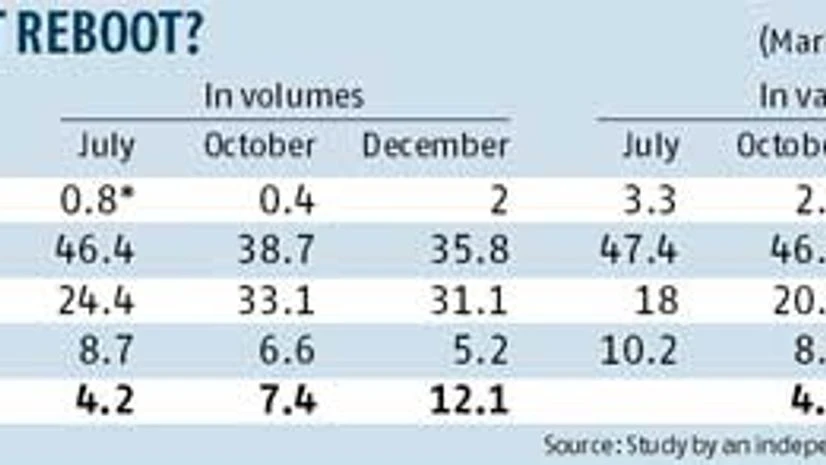Samsung’s top position in the segment, where Nokia is the second, remains intact, but its market share in terms of units sold has seen a significant drop — from 46.4 per cent in July 2012 to 35.8 per cent in December, according to an independent market research firm’s retail report for smartphones.
The market share of Apple, which launched iPhone 5 in November and has been pushing its products aggressively, through bundled as well as equated-monthly-instalment offers, doubled to about two per cent in December, from under one per cent (estimated) in July and 0.6 per cent in October. It also pushed its sales by cutting prices of earlier iPhone versions.
Apple’s numbers look attractive in terms of value, too. Its share doubled from 3.3 per cent in July to 6.7 per cent in December. During the same period, Samsung’s share in value terms fell from 47.4 per cent to 43.3 per cent.
However, it’s not just Apple. Home-grown brands, such as Micromax, Karbonn and Lava, too, have played a critical role in an estimated 17-million-unit-a-year Indian smartphone market. These players are gaining market share, quickly, by playing the value-for-money game.
In terms of value, the combined market share of these brands, labelled ‘others’ in the research firm’s study, increased from 4.2 per cent in July to 12.1 per cent in December. Lava Mobiles Chairman S N Rai says: “There were perception issues earlier, but the urban market has now begun to respond to Indian brands.”
Micromax Chief Marketing Officer Shubhodip Pal says his company has received 60 per cent of orders for its recently launched smartphone Canvas HD from the metro markets.
HTC, on the other hand, hopes to sell 4.4 million phones in India this year. “We are targeting 20 per cent market share in smartphones over the next 12 months,” says Faisal Siddiqui, the company’s country head.
Samsung declined to comment on the market share for the period under review. It, however, said it had seen a year-on-year growth. “In 2012, you would see Samsung’s market share jumped over 20 percentage points in value terms and 10 percentage points in volumes. I am confident we can further consolidate our leadership in the smartphone market this year,” Samsung Mobile Vice-President Asim Warsi said in an emailed response.
In value terms, Samsung’s market share rose 45.5 per cent in full 2012 from 23.8 per cent in 2011, it said.
At 31.1 per cent, the volume market share of Nokia, Samsung’s biggest rival in India, in December increased from July’s 24.4 per cent, but dropped from October’s 33.1 per cent. Its Asha series has helped it bolster its position in the segment, say analysts.
According to industry estimates, the smartphone market is growing at 80 per cent a year and smartphones are set to account for 17 per cent of all mobile devices sold this year.


)
